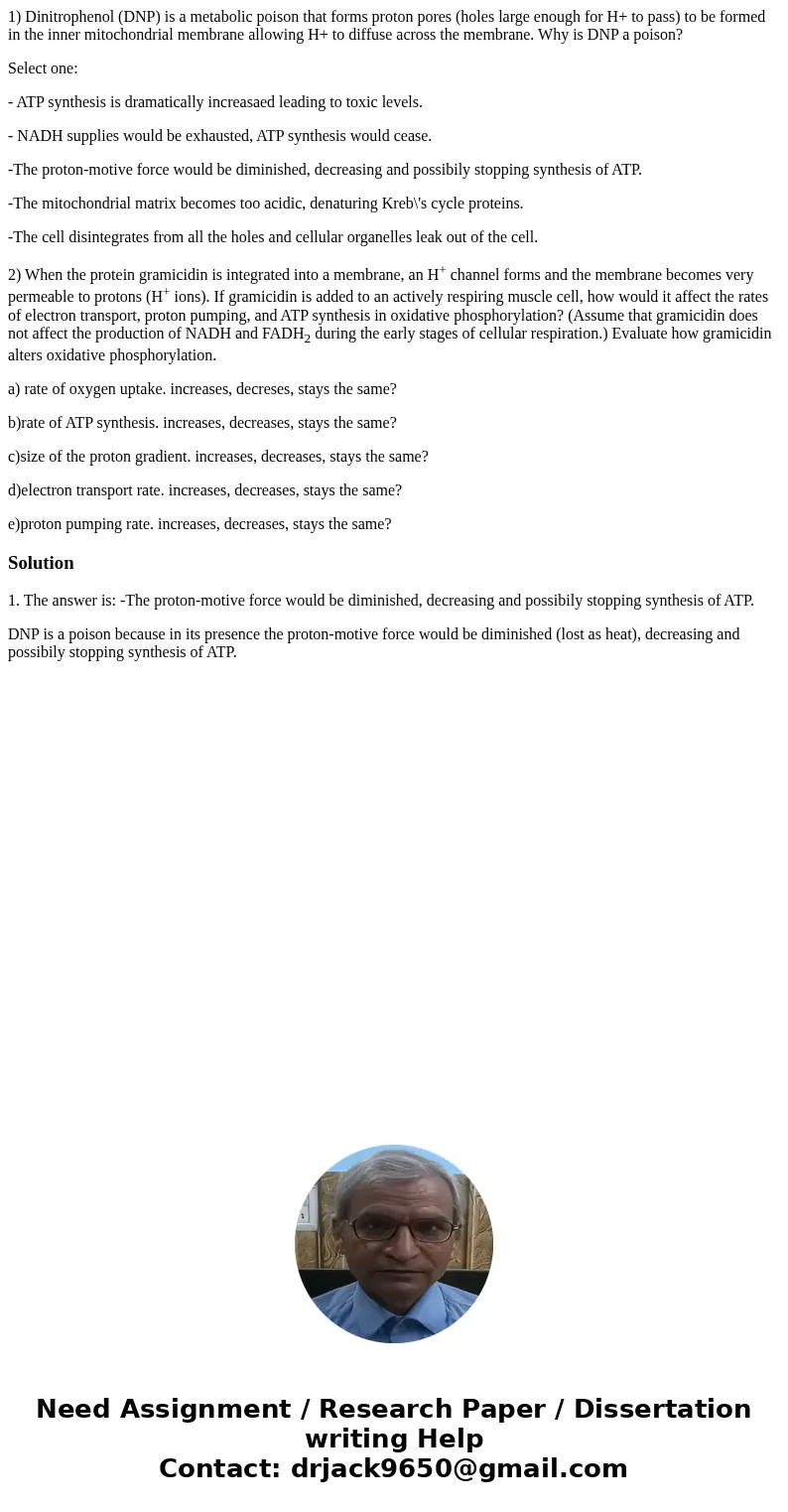1 Dinitrophenol DNP is a metabolic poison that forms proton
1) Dinitrophenol (DNP) is a metabolic poison that forms proton pores (holes large enough for H+ to pass) to be formed in the inner mitochondrial membrane allowing H+ to diffuse across the membrane. Why is DNP a poison?
Select one:
- ATP synthesis is dramatically increasaed leading to toxic levels.
- NADH supplies would be exhausted, ATP synthesis would cease.
-The proton-motive force would be diminished, decreasing and possibily stopping synthesis of ATP.
-The mitochondrial matrix becomes too acidic, denaturing Kreb\'s cycle proteins.
-The cell disintegrates from all the holes and cellular organelles leak out of the cell.
2) When the protein gramicidin is integrated into a membrane, an H+ channel forms and the membrane becomes very permeable to protons (H+ ions). If gramicidin is added to an actively respiring muscle cell, how would it affect the rates of electron transport, proton pumping, and ATP synthesis in oxidative phosphorylation? (Assume that gramicidin does not affect the production of NADH and FADH2 during the early stages of cellular respiration.) Evaluate how gramicidin alters oxidative phosphorylation.
a) rate of oxygen uptake. increases, decreses, stays the same?
b)rate of ATP synthesis. increases, decreases, stays the same?
c)size of the proton gradient. increases, decreases, stays the same?
d)electron transport rate. increases, decreases, stays the same?
e)proton pumping rate. increases, decreases, stays the same?
Solution
1. The answer is: -The proton-motive force would be diminished, decreasing and possibily stopping synthesis of ATP.
DNP is a poison because in its presence the proton-motive force would be diminished (lost as heat), decreasing and possibily stopping synthesis of ATP.

 Homework Sourse
Homework Sourse